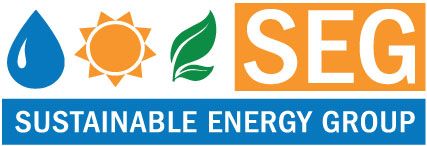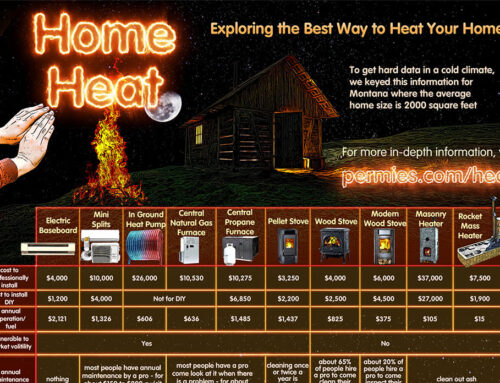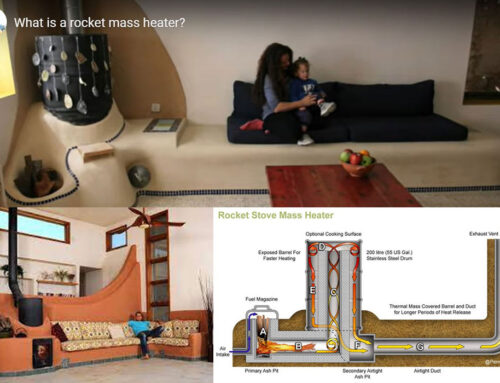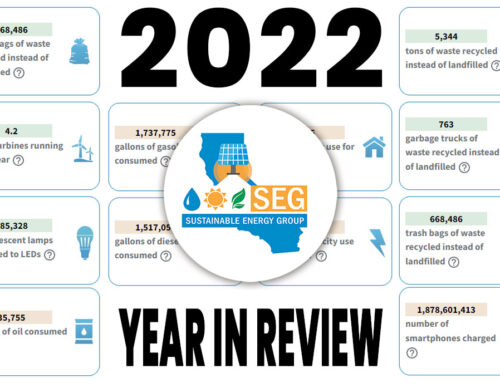Evaporative Cooling – Less Energy, Lower Cost
A low-cost summer, energy saving cooling option for your home here in the Sierra Foothills of California.
If you don’t have any cooling or if you’re paying too much for air-conditioning, I have a viable alternative for you to consider. But before getting into that however, an important first step for staying cool is to always do whatever you can to keep the sun out, a topic I covered in last month’s newsletter article on solar shades.
You’ve probably heard of “swamp coolers” but I prefer the term “evaporative cooler”. While the terms have been used interchangeably, I use evaporative cooler to describe coolers that use a more efficient pad than you find in the typical swamp cooler. The pad is the material the water runs down in and the air blows across. The old-style metal swamp coolers use relatively thin pads made of aspen wood shavings or a plastic mesh. I prefer the coolers with thick honeycomb shaped pads such as the CELdek™ pads made by Munters, as they produce cooler air.
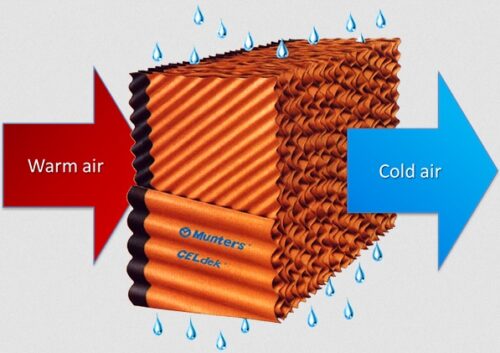


I also prefer coolers made of a high quality plastic that doesn’t rust. My own cooler has been in use for 10 years and, with new pads every few years, should last much longer. It’s much more compact than the common swamp cooler too. Examples of these types of coolers are the Durango model made by Bonaire and the MasterCool slim-profile evaporative cooler, both of which are available from many home stores for around $600 to $700.
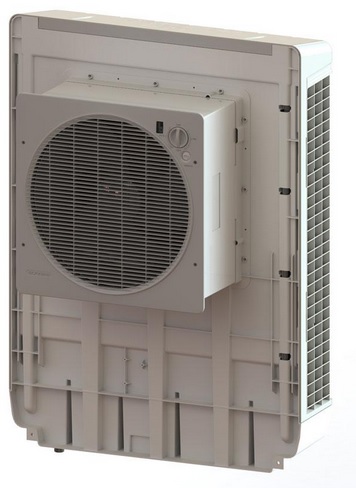


Another important factor for effective evaporative cooling is to open lots of windows at the other end of your home from the cooler. This allows the cool air to move across and through rooms, with the breeze helping to cool you and your home down as well.
To give you an idea of how they perform, I recently kept our home at a comfortable 73 degrees when the outside temperature was 102 degrees using just 175 watts of electricity. For comparison a 10,000 Btu/hr window air conditioner uses about 1,000 watts.
There are much more efficient air conditioners that cost less to operate but they’re considerably more costly. There are high-efficiency heat pumps that provide summer cooling as well as heat in winter, but they’re also more costly. Those may be a better choice in some cases, but I’ll cover those in a future newsletter.
Evaporative coolers aren’t for everyone. They work best when the outside air is hot and dry. There are a few weeks every year when the outside air is both hot and humid, but even heat-sensitive people I know have tolerated them as long as there’s enough of a breeze moving over your body. They can also be noisy and blustery, so finding a good location where noise and a strong breeze isn’t an issue is important.
In addition to window units there are whole-house evaporative coolers, some even employing ductwork to serve individual rooms. These units can have pads up to 12 inches thick and, with ducts serving individual rooms, the noise and strong breeze is greatly reduced.
This is part of an ongoing series of energy efficiency tips to make your home more comfortable, healthy and most of all smarter on energy use here in the Sierra Nevada Foothills.
